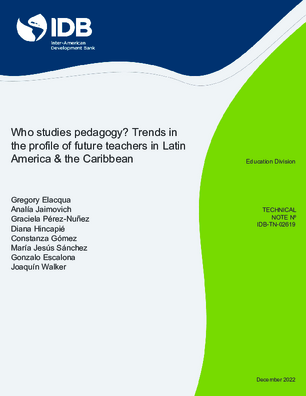Who Studies Pedagogy? Trends in the Profile of Future Teachers in Latin America & the Caribbean
Date
Dec 2022
Latin America and the Caribbean (LAC) face significant challenges regarding the quantity and quality of the teaching workforce. In a context where there is a need for more and better teachers in schools, this study examines the first step in the teaching career: initial teacher education (ITE) programs. Specifically, the study investigates the characteristics and enrollment trends in ITE programs across 16 LAC countries from 2015 to 2020. In these countries, ITE programs represent 12.4% of enrollment in higher education (compared to 8% in OECD countries and less than 1% in the US). The participation of ITE programs in higher education enrollment is lower in countries with higher accreditation and entry requirements for the teaching profession and higher in countries with less regulation of ITE programs. In general, ITE enrollment is highly feminized (73% women), and female representation declines in specialties aimed at higher levels of teaching. Compared to the rest of higher education enrollment, ITE programs are more concentrated in public institutions. Additionally, the availability of bilingual intercultural ITE programs is insufficient relative to the proportion of the population identifying as indigenous, and policies to promote such programs are scarce. Finally, compared to other professional careers, students enrolled in ITE programs are disproportionately women, indigenous, from rural areas, from medium and medium-low socioeconomic backgrounds, and with lower academic performance upon entry. Governments in the region are confronted with a short-term public policy dilemma: how to increase the quantity, quality, and relevance of future teachers.




